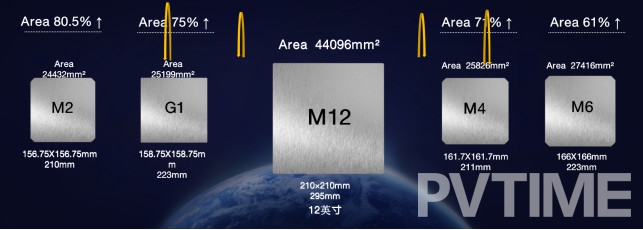Wafer sizes have increased in small incremental ways over the last seven years from m1 156 75 205 mm diagonal length to m2 156 75 210 mm and to m4 161 7 211 mm.
M4 solar wafer size.
M4 wafers make better use of the ingot than m2 wafers help increase module power by 20 to 25 watts and thus support material and labor cost reduction during installation maximum output.
Why wafer size matter.
But now it appears a new milestone moment has arrived.
Although m2 wafers are easy to integrate even larger wafer sizes are beginning to be used to obtain 400 w plus modules.
At that time our taiwanese cell manufacturer went straight from m2 to the m4 with a size of 161 7 mm in order to only make necessary investment purchases once together with the multi busbar variant.
Jinkosolar began producing modules with 158 75 mm side length in 2018 lg went even further with 161 75 mm in as early as 2017 whereas canadian solar pushed their multicrystalline technology with 166 75 mm side length cells.
This is the generalized method used based on a number of sources.
At intersolar 2019 we had already introduced the black ibc monosol zl mb black with the wafer size m4.
Since 2017 156 75 mm m2 wafers have been the standard.
However improvements in cell efficiency appear to have hit a bottleneck making wafer size a hot topic among manufacturers once again.
M1 m 2 m3 m4 m5 m6 m12 solar wafer and solar cell sizes m1 m2 m3 m4 m5 m6 and m12 are standard different wafer sizes used in the solar cell production process.
The process of manufacturing solar cells from single crystal p type silicon wafers is detailed below.
The demand for wafers has exponentially increased over the past two decades due to the increase in the production and sale of pv systems smartphones and more.
This was the driver for all cell producers to switch to the then larger wafer size after 2010 156mm x 156mm wafers increasingly became the popular choice lower cost per watt for p type mono.

